
Roots
The journey of hair, particularly textured hair, is a deeply personal and culturally resonant one, extending far beyond mere aesthetics. It speaks to identity, heritage, and the intimate rituals woven into daily life. Yet, beneath the surface of our cherished routines and the vibrant expressions of self, a quiet conversation unfolds between the products we choose and the very core of our being—our reproductive health.
This exploration seeks to illuminate the scientific connections, inviting a thoughtful pause to consider what we apply to our crowns and how these choices might echo within our bodies. It is a gentle beckoning into the elemental understanding that the foundation of hair health extends to systemic well-being.

Hair Anatomy and Physiology Specific to Textured Hair
Textured hair, with its remarkable diversity, possesses unique anatomical characteristics that differentiate it from straight hair. The follicle, the tiny pocket from which each strand emerges, plays a central role. For textured hair, this follicle is often elliptical or flattened in shape, rather than round. This distinct shape influences the hair shaft’s curvature, leading to the beautiful coils, curls, and waves we admire.
This curvature also means that the cuticle, the outermost protective layer of the hair, does not lie as flat as it does on straight hair. This lifted cuticle, while contributing to the hair’s unique appearance, can also affect how readily external substances penetrate the hair shaft and, crucially, the scalp.
The scalp itself, a living, breathing organ, is a direct pathway to the bloodstream. Its vascularity, rich with blood vessels, allows for the absorption of compounds applied to its surface. While the skin acts as a barrier, its effectiveness can vary depending on the chemical properties of a substance, the duration of contact, and the integrity of the skin itself.
For instance, smaller molecules, those with certain solubilities, or substances applied to compromised skin (perhaps from scratching or irritation) may be more readily absorbed. This direct access route makes the composition of hair products, particularly those designed for scalp application, a significant consideration for overall health.

The Essential Lexicon of Textured Hair
To navigate the landscape of textured hair care and its potential health intersections, a precise vocabulary becomes a guiding light. Understanding these terms helps to demystify product labels and the science behind them.
- Hair Porosity ❉ This refers to the hair’s ability to absorb and retain moisture. Hair with higher porosity, often due to a more lifted cuticle, can absorb substances more quickly, potentially including undesirable chemicals.
- Scalp Barrier Function ❉ The scalp’s protective layer, which can be influenced by product ingredients, environmental factors, or physical manipulation. A compromised barrier may increase absorption.
- Endocrine Disrupting Chemicals (EDCs) ❉ Substances that interfere with the body’s hormone system, mimicking or blocking natural hormones, or altering their production and transport. These are central to the discussion of reproductive health outcomes.
- Chemical Relaxers ❉ Products that chemically alter the hair’s protein structure to permanently straighten it. These often contain strong alkaline agents or formaldehyde-releasing chemicals.

Hair Growth Cycles and Influencing Factors
Hair growth is a cyclical process, unfolding in three main phases ❉ anagen (growth), catagen (transition), and telogen (resting). This cycle is finely tuned by a complex interplay of genetic, nutritional, and hormonal factors. Disruptions to this delicate balance, whether from internal imbalances or external exposures, can affect hair health and, by extension, reflect broader systemic conditions. The chemicals applied to the scalp, particularly those that can be absorbed, possess the potential to influence these hormonal signals, creating a subtle yet persistent dialogue with the body’s internal systems.
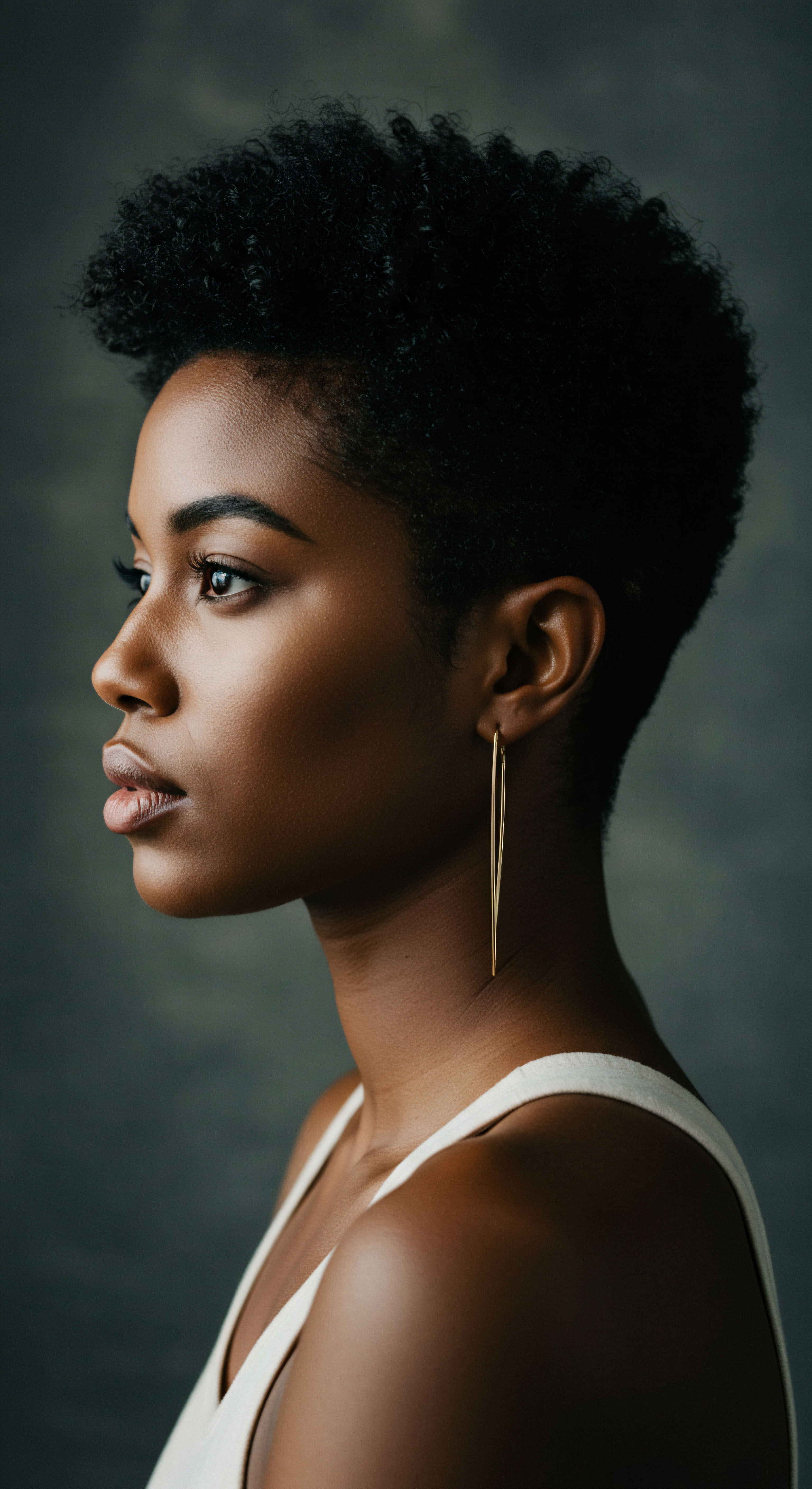
Early Inquiries into Product Safety
Concerns about the safety of chemicals in personal care products are not new. Historically, many substances were introduced into consumer goods with limited pre-market testing for long-term health effects. Early hair care formulations, often relying on strong chemicals for dramatic transformations, were no exception. As scientific understanding advanced, so did the recognition of potential adverse reactions, from immediate scalp irritation to broader systemic concerns.
This growing awareness laid the groundwork for contemporary research into the more subtle, long-term impacts of chemical exposures from our daily beauty rituals. The journey from initial product development to a comprehensive understanding of its biological footprint is a lengthy one, often driven by persistent scientific inquiry and public advocacy.
The intricate biology of textured hair and its scalp offers a unique lens through which to examine the subtle yet profound influence of hair products on our overall health.

Ritual
Stepping from the foundational understanding of hair’s biological blueprint, we now turn our attention to the practices that shape its care—the rituals. These are not merely rote actions but expressions of self-care, cultural connection, and personal aspiration. Within these routines, from the gentle cleansing to the conditioning and styling, lies a deeper story of ingredients and their silent exchange with our bodies. This section offers practical wisdom, guiding us through the landscape of hair care products and their components, allowing us to approach our routines with gentle guidance and informed choices.
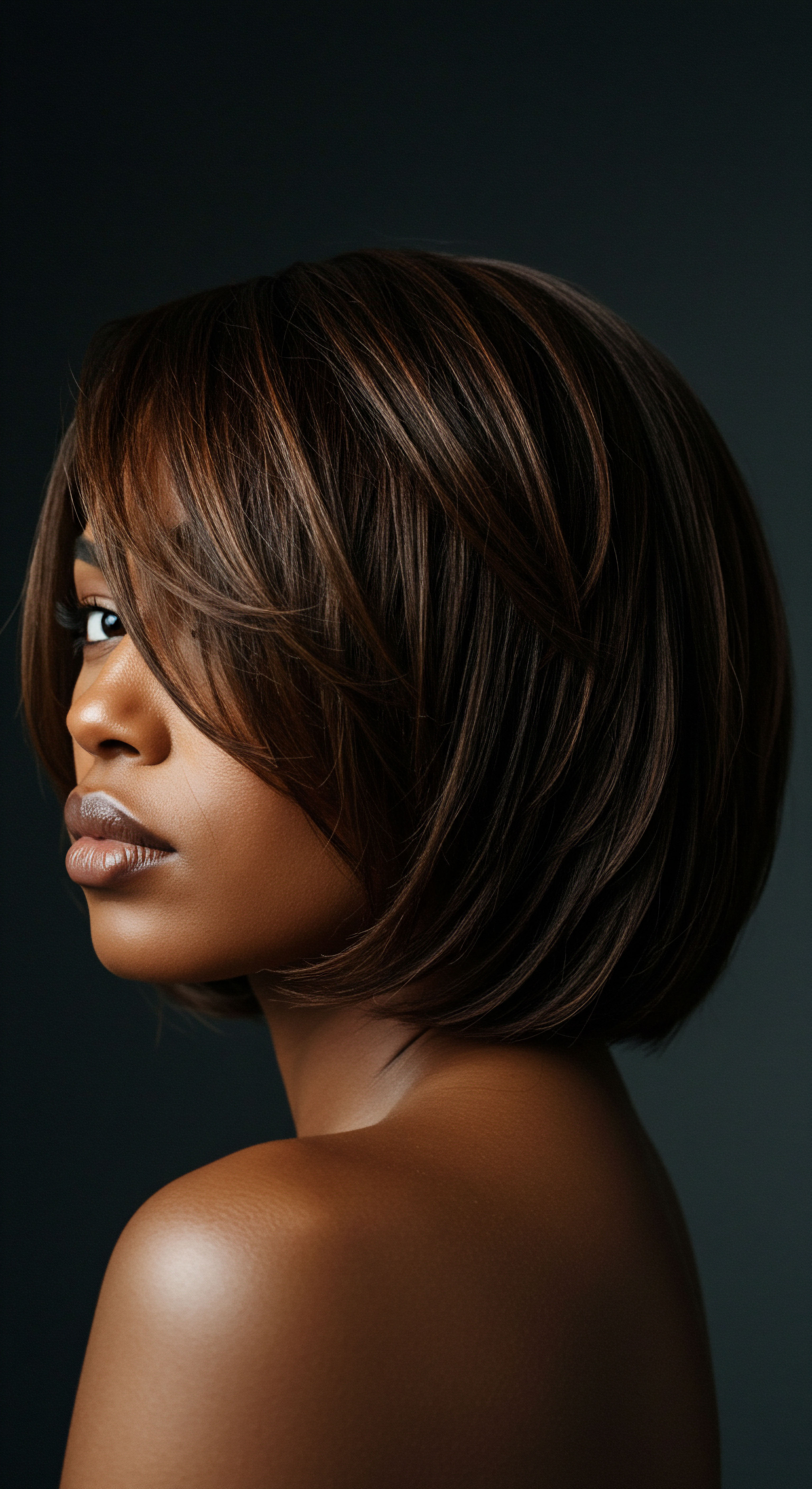
Ingredient Deep Dives for Textured Hair Needs
The formulations designed for textured hair often address specific concerns such as moisture retention, detangling, and curl definition. However, the ingredients chosen to achieve these effects can sometimes carry unintended consequences. Certain chemicals, while serving a functional purpose in a product, have raised flags in scientific studies due to their potential to interfere with the body’s delicate hormonal balance.
Consider Phthalates, a group of chemicals frequently found in hair products, often hidden under the umbrella term “fragrance” or “parfum.” These compounds are used to make scents last longer or to provide flexibility in plastics. Research indicates that certain phthalates can act as endocrine disruptors, meaning they can mimic or block natural hormones. Studies have linked phthalate exposure to a spectrum of reproductive health concerns, including altered menstrual cycles, reduced sperm quality, and increased risk of endometriosis. For example, higher levels of certain phthalates have been associated with diminished ovarian reserve in women.
Then there are Parabens, common preservatives used to prevent microbial growth in products. While they extend shelf life, studies suggest parabens can act like estrogen in the body, potentially disrupting hormonal systems. This interference can affect reproductive development, fertility, and even birth outcomes. Some research points to a link between high paraben levels and shorter menstrual cycles, as well as decreased sperm motility and testosterone levels in men.
Formaldehyde-Releasing Chemicals, such as DMDM hydantoin or quaternium-15, are also found in some hair products, particularly relaxers and straightening treatments. These chemicals slowly release formaldehyde, a known carcinogen, and have been associated with allergic reactions and skin irritation. Beyond immediate irritation, their systemic effects, especially with repeated exposure, warrant concern.
More recently, Per- and Polyfluoroalkyl Substances (PFAS), often called “forever chemicals,” have been identified in various personal care products, including shampoos and conditioners. These substances are used for their water-resistant properties. While research is still unfolding, PFAS have been linked to hormone disruption, altered immune responses, and adverse birth outcomes like decreased birth weight and preterm birth.
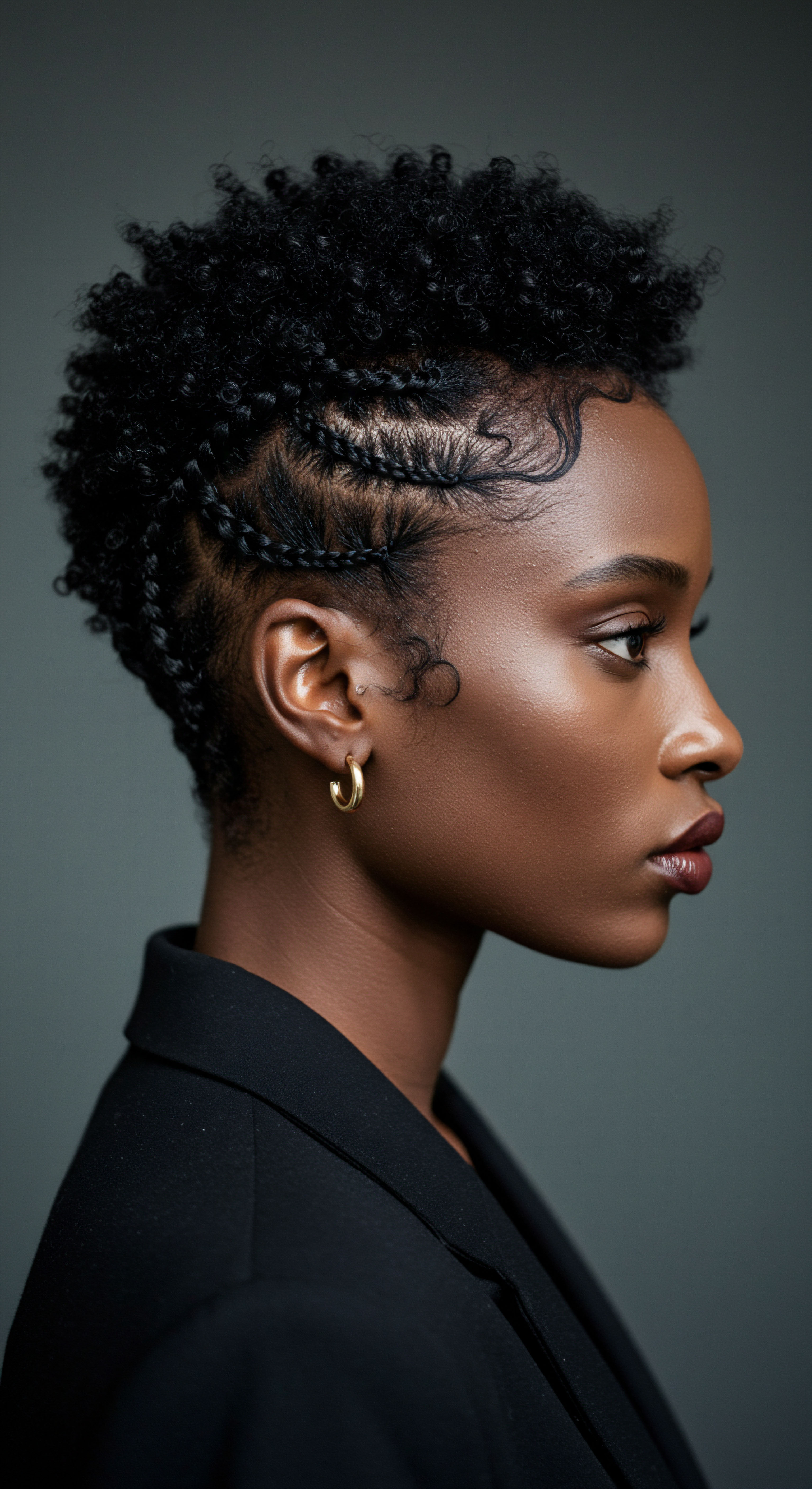
How Do Ingredients Reach Our Reproductive Systems?
The path from hair product to reproductive system primarily involves absorption through the scalp. The scalp, being highly vascular, offers a direct route for chemicals to enter the bloodstream. While the extent of absorption varies based on factors like molecular weight, solubility, and the condition of the scalp barrier, consistent exposure over time can lead to a measurable “body burden” of these chemicals. Inhalation of volatile compounds from products, particularly during application in poorly ventilated spaces, also presents a route of exposure.
Once absorbed, these chemicals can circulate throughout the body, reaching various organs and tissues, including those involved in reproductive function. Endocrine disrupting chemicals, for instance, can bind to hormone receptors, interfering with the body’s natural signaling pathways. This can lead to a cascade of effects, potentially impacting ovarian function, sperm production, uterine health, and the delicate hormonal balance necessary for conception and pregnancy.
The daily choices in hair care, though seemingly small, contribute to a cumulative chemical exposure that warrants thoughtful consideration for long-term health.

Building Personalized Textured Hair Regimens
Creating a hair care regimen for textured hair is often a thoughtful process, tailored to individual needs and preferences. This personalization, however, also presents an opportunity for mindful ingredient selection.
One might begin by scrutinizing product labels, looking for explicit “free-from” claims, such as “paraben-free” or “phthalate-free.” Yet, labels alone may not tell the complete story, as some chemicals are not always fully disclosed. This calls for a deeper engagement with ingredient lists and a growing awareness of common chemical names to avoid.
Consider a study by the Silent Spring Institute which found that hair products marketed to Black women contained a higher concentration of endocrine-disrupting chemicals compared to other products. The study, which tested 18 different hair products, detected 45 endocrine disruptors, with each product containing between 4 and 30 of these chemicals. This finding underscores a critical disparity in chemical exposure linked to products often chosen within specific communities.
Choosing products with fewer, simpler ingredients, or opting for those with third-party certifications for safety, can help reduce potential exposure. The cumulative effect of consistent product use means that even small amounts of certain chemicals, when applied daily or weekly over years, can contribute to a significant internal load.
| Ingredient Class Phthalates |
| Examples Diethyl phthalate (DEP), Dibutyl phthalate (DBP) |
| Primary Use in Hair Products Fragrance carriers, plasticizers |
| Reported Reproductive Health Concerns Altered menstrual cycles, reduced sperm quality, endometriosis, early puberty |
| Ingredient Class Parabens |
| Examples Methylparaben, Propylparaben, Butylparaben |
| Primary Use in Hair Products Preservatives |
| Reported Reproductive Health Concerns Estrogenic activity, diminished ovarian reserve, altered sperm parameters |
| Ingredient Class Formaldehyde Releasers |
| Examples DMDM Hydantoin, Quaternium-15 |
| Primary Use in Hair Products Preservatives |
| Reported Reproductive Health Concerns Potential for systemic toxicity with chronic exposure |
| Ingredient Class Siloxanes |
| Examples Cyclotetrasiloxane (D4), Cyclopentasiloxane (D5) |
| Primary Use in Hair Products Conditioning agents, emollients |
| Reported Reproductive Health Concerns Suspected reproductive toxicity, potential for uterine tumors (animal studies) |
| Ingredient Class Resorcinol |
| Examples Resorcinol |
| Primary Use in Hair Products Hair dye coloring agent |
| Reported Reproductive Health Concerns Thyroid disruption, endocrine disruption |
| Ingredient Class PFAS |
| Examples Polyfluoroalkyl substances |
| Primary Use in Hair Products Water resistance, smoothing |
| Reported Reproductive Health Concerns Hormone disruption, adverse birth outcomes |
| Ingredient Class This table summarizes common ingredient classes and their reported links to reproductive health, based on scientific research. |

Relay
The journey of understanding the connection between hair products and reproductive health now moves to a more sophisticated landscape, where scientific data intertwines with cultural narratives and systemic realities. This section aims to illuminate the less apparent complexities, inviting a profound insight into how biological responses, societal pressures, and regulatory gaps converge. It is here that we delve into the deeper currents, moving beyond individual choices to the broader systems that shape our exposures.
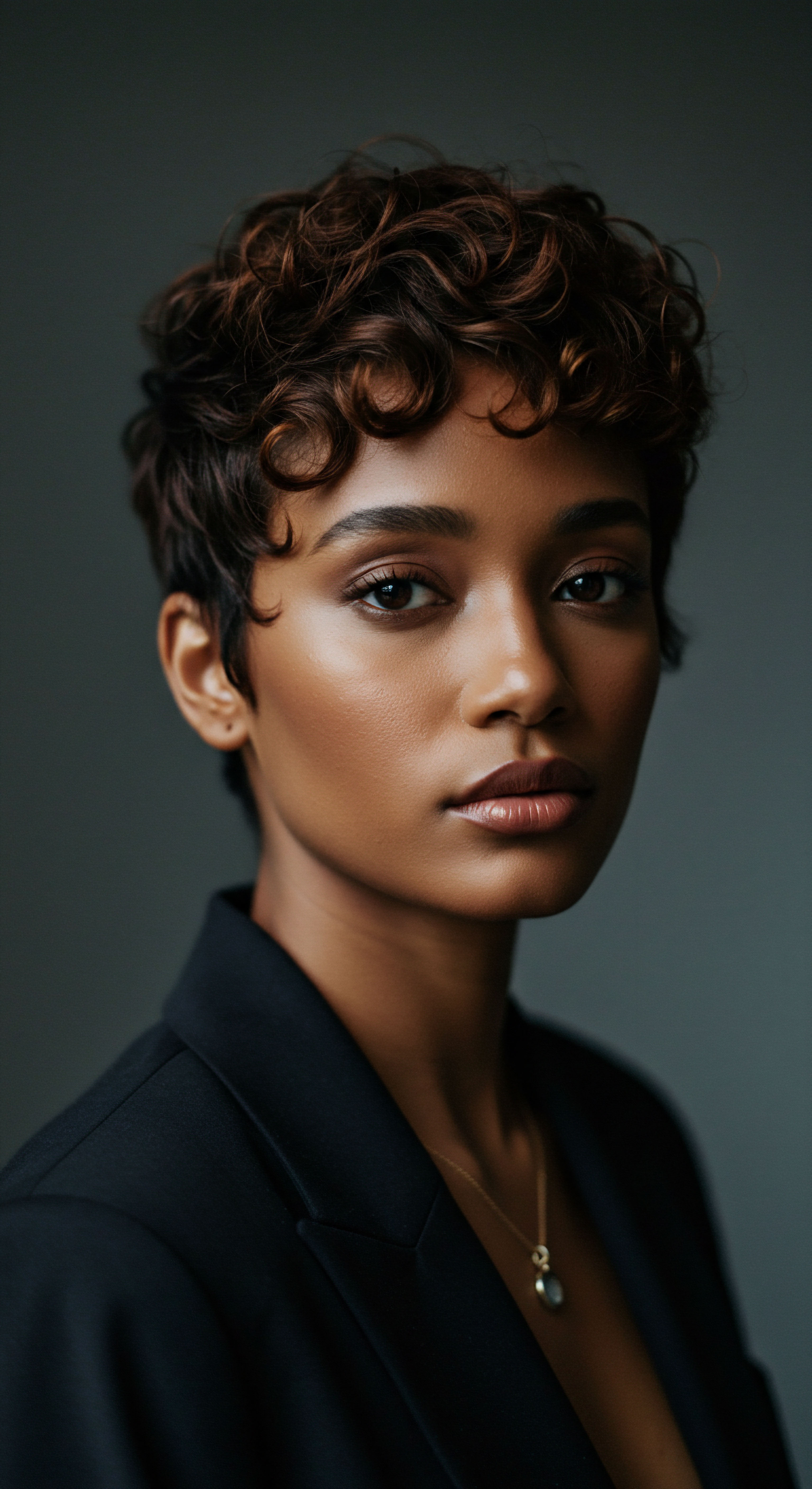
Systemic Exposures and Health Disparities
The scientific discourse on hair products and reproductive health cannot exist in isolation from the social context. Historically, and continuing into the present, certain hair products, particularly chemical relaxers and specific styling agents, have been disproportionately marketed to and used by Black women and girls. This phenomenon is rooted in societal pressures and beauty standards that often favored straightened hair textures. The pervasive use of these products within these communities has led to a concerning disparity in exposure to potentially harmful chemicals.
Studies have consistently revealed higher levels of certain endocrine-disrupting chemicals, such as phthalates and parabens, in the bodies of Black women compared to other racial and ethnic groups. This elevated body burden is not merely a matter of individual preference; it reflects a systemic issue where products with higher hazard scores are more readily available or more heavily promoted in communities of color. For instance, research evaluating product availability in Boston neighborhoods found that stores in low-income communities predominantly made up of Hispanic and Black residents were twice as likely to sell personal care products with higher concentrations of dangerous chemicals compared to stores in high-income, predominantly White communities. This “retail redlining” contributes significantly to health inequities.
The consequences of this disproportionate exposure are stark. Black women experience higher rates of hormone-mediated health issues, including early puberty, uterine fibroids, preterm birth, and infertility. While these conditions are multifactorial, the accumulating evidence points to chemical exposures from hair products as a contributing element. This situation calls for a re-evaluation of product development, marketing practices, and regulatory oversight to ensure equitable access to safe hair care options for all.

Endocrine Disrupting Chemicals and Their Mechanisms
The core of the scientific concern lies with endocrine disrupting chemicals (EDCs). These are substances that, even at low doses, can interfere with the body’s endocrine system, which regulates hormones responsible for growth, metabolism, development, and, critically, reproduction.
EDCs can exert their influence through various mechanisms:
- Mimicry ❉ Some EDCs imitate natural hormones, like estrogen or testosterone, tricking the body’s receptors into responding inappropriately. This can lead to an overstimulation or an untimely activation of hormonal pathways.
- Blockage ❉ Other EDCs can block hormone receptors, preventing natural hormones from binding and carrying out their functions. This effectively silences essential hormonal signals.
- Alteration of Synthesis or Metabolism ❉ EDCs can interfere with the production, transport, or breakdown of hormones, leading to either an excess or deficiency of crucial signaling molecules.
- Direct Cell Damage ❉ Beyond hormonal interference, some chemicals can directly damage reproductive cells or tissues, affecting their function or viability.
These disruptions can have profound impacts on reproductive health. For women, this may manifest as irregularities in menstrual cycles, ovulatory dysfunction, premature ovarian aging, and conditions like endometriosis and uterine fibroids. For men, EDCs can affect sperm quality, count, and motility, contributing to male factor infertility. Exposure during critical windows of development, such as pregnancy, is particularly concerning, as it can influence fetal development and potentially lead to adverse birth outcomes or long-term health issues for the offspring.
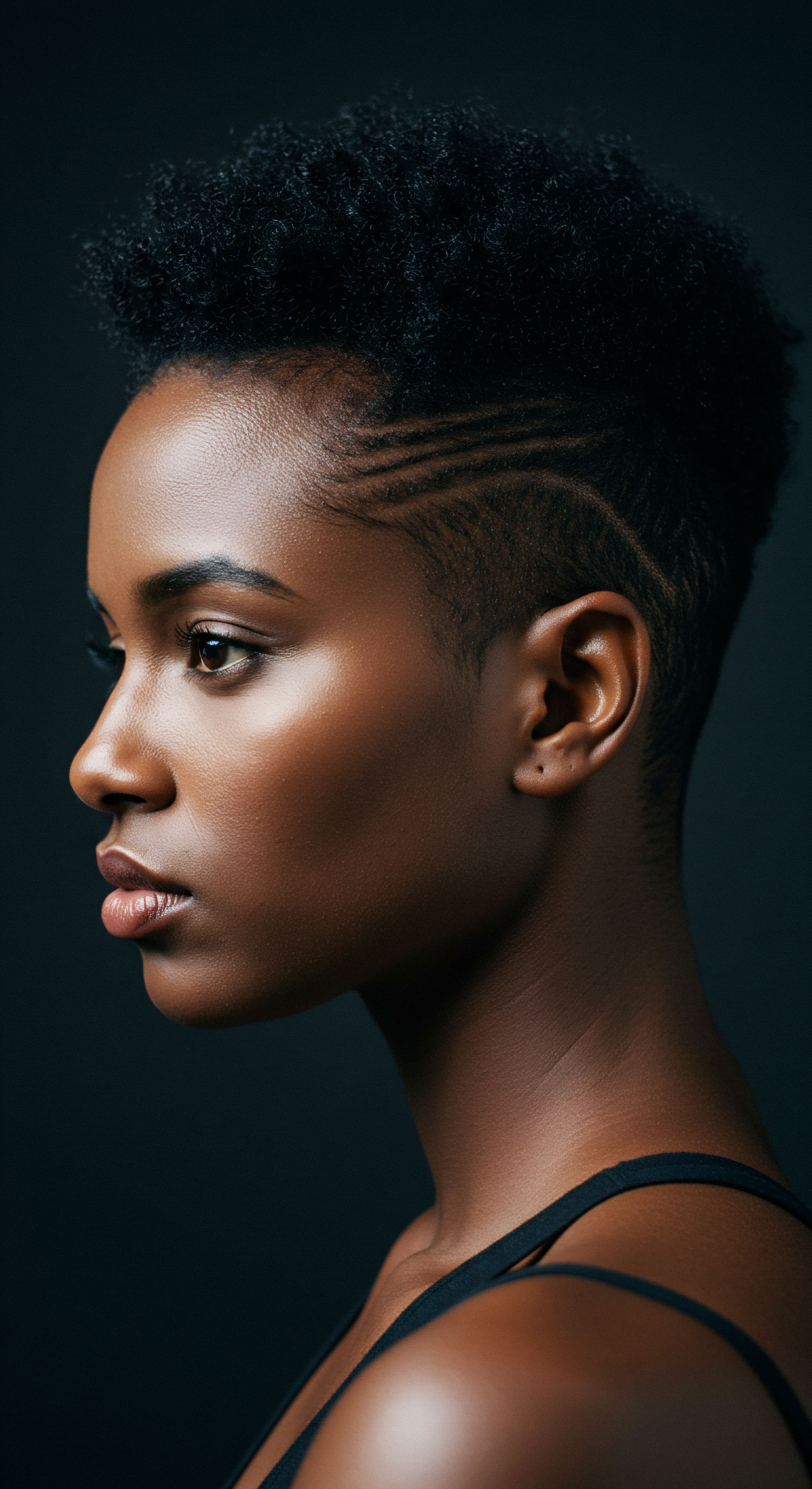
Beyond the Individual Product Cumulative Exposure
The conversation about hair products and reproductive health expands when considering the concept of cumulative exposure. Individuals are not exposed to a single chemical from one product; rather, they encounter a complex mixture of chemicals from various sources daily—food, water, air, household products, and indeed, multiple personal care items. This “body burden” represents the total accumulation of these chemicals within the body over time.
While a single application of a product might contain a low concentration of a particular chemical, consistent, long-term use of multiple products containing similar or synergistic endocrine disruptors can lead to a significant overall exposure. This additive effect, where different chemicals might act on the same biological pathways, presents a challenge for risk assessment and regulation. It underscores the need for a holistic perspective on environmental health, recognizing that the sum of exposures may be greater than the individual parts.
The intersection of scientific findings and social realities reveals that product choices are not isolated acts but are deeply influenced by systemic factors, particularly for communities of color.

Regulatory Landscapes and Consumer Advocacy
The current regulatory framework for cosmetics and personal care products in many countries, including the United States, often lags behind scientific understanding of chemical safety. Unlike pharmaceuticals, cosmetics typically do not require pre-market approval by regulatory bodies. This means that many ingredients can enter the market without comprehensive safety testing for long-term or cumulative effects on human health, especially reproductive health.
This regulatory gap places a greater onus on scientific research and consumer advocacy to drive change. Organizations and researchers continue to publish studies identifying concerning chemicals and their potential health impacts, prompting public awareness and calls for stronger regulations. Consumer demand for “cleaner” products has also spurred some industry shifts, with companies reformulating products to exclude certain ingredients.
However, the pace of change remains slow, and the burden of identifying safe products often falls on the individual consumer. This dynamic highlights the critical need for more robust regulatory oversight and transparent ingredient disclosure to truly protect public health.

Intergenerational Impacts
Perhaps one of the most sobering aspects of chemical exposure from personal care products is the potential for intergenerational effects. Research suggests that exposure to certain environmental chemicals during pregnancy can cross the placenta, leading to accumulation in the fetus. This means that the next generation can be born with a “pre-polluted” body burden, potentially setting the stage for health issues later in their lives.
Studies have connected maternal exposure to certain chemicals with adverse outcomes in children, including impaired brain development, behavioral problems, early puberty, and altered pubertal trajectories. This raises profound questions about the legacy of chemical exposure and the responsibility to safeguard future generations. Addressing the presence of harmful chemicals in widely used products becomes not just a matter of individual health, but one of collective public health and the well-being of society across time.
| Mechanism of Action Hormone Mimicry |
| Description EDCs structurally resemble natural hormones and bind to their receptors, activating or deactivating cellular responses inappropriately. |
| Potential Reproductive Impact Altered pubertal timing, menstrual irregularities, ovarian dysfunction, reduced sperm production. |
| Mechanism of Action Hormone Receptor Blockade |
| Description EDCs bind to hormone receptors, preventing natural hormones from attaching and signaling, thereby inhibiting normal physiological processes. |
| Potential Reproductive Impact Impaired fertility, disrupted reproductive organ development, altered pregnancy outcomes. |
| Mechanism of Action Altered Hormone Synthesis/Metabolism |
| Description EDCs interfere with enzymes responsible for hormone creation or breakdown, leading to imbalances in hormone levels. |
| Potential Reproductive Impact Thyroid dysfunction affecting reproductive hormones, imbalances in estrogen/androgen ratios. |
| Mechanism of Action Epigenetic Modifications |
| Description EDCs can alter gene expression without changing the underlying DNA sequence, potentially leading to long-term effects passed down generations. |
| Potential Reproductive Impact Transgenerational reproductive health issues, altered susceptibility to reproductive diseases in offspring. |
| Mechanism of Action EDCs influence reproductive health through complex interactions with the body's hormonal systems. |

Reflection
The quiet conversation between our hair products and our reproductive health, once whispered, now resonates with increasing clarity. We stand at a precipice of knowledge, armed with scientific insights that challenge long-held assumptions about the innocuous nature of our daily rituals. The journey through the anatomical intricacies of textured hair, the subtle exchanges of chemical compounds within our bodies, and the broader societal currents that shape exposure, reveals a landscape far richer and more complex than meets the eye.
This exploration is an invitation to pause, to question, and to approach our self-care with an informed heart, recognizing that every choice, however small, holds a ripple effect. May we continue to seek understanding, to advocate for transparency, and to nurture our well-being from the roots upward, for ourselves and for those who will come after us.

References
- Bloom, Michael S. et al. “Personal care products are linked to higher levels of hormone-disrupting chemicals in kids.” Environmental Health Perspectives, 2024.
- James-Todd, Tamarra, et al. “Uncovering the dangers of hair products marketed to Black women, girls.” Harvard T.H. Chan School of Public Health, 2024.
- Liu, Ruixue, et al. “Hair Dye Ingredients and Potential Health Risks from Exposure to Hair Dyeing.” Chemical Research in Toxicology, vol. 35, no. 6, 2022, pp. 1001-1014.
- Rivera-Núñez, Zorimar, et al. “Chemicals From Hair and Beauty Products Impact Hormones, Especially During Pregnancy.” Environmental Research, vol. 203, 2022, p. 111811.
- Helm, Jessica S. et al. “Hormonal activity in commonly used Black hair care products ❉ evaluating hormone disruption as a plausible contribution to health disparities.” Environmental Health, vol. 20, no. 1, 2021, p. 55.
- Environmental Working Group. “Higher hazards persist in personal care products marketed to Black women, report reveals.” EWG.org, 2025.
- MDhair. “Hazards of toxic chemicals in your hair care products.” MDhair.com, 2025.
- Lopez-Carrillo, L. et al. “Exposure to phthalates and breast cancer risk.” Environmental Health Perspectives, vol. 118, no. 5, 2010, pp. 719-724.
- Environmental Working Group. “Dye dangers ❉ Harmful chemicals in hair coloring products and their health concerns.” EWG.org, 2024.
- Orbasics. “Are There Harmful Chemicals in Hair Dyes? 9 Toxic Ingredients To Avoid.” Orbasics.com, 2024.
- Chan, Marissa, et al. “Bad Hair Day ❉ Toxic Chemicals in Hair Products.” Public Health Post, 2024.
- Environmental Working Group. “What Are Parabens, and Why Don’t They Belong in Cosmetics?” EWG.org, 2019.
- SEEN. “Cyclotetrasiloxane in Hair and Skin Care ❉ Benefits, Risks, and Alternatives.” SEENhaircare.com, 2025.
- Woodruff, Tracey J. et al. “Environmental Influences on Reproductive Health, the Importance of Chemical Exposures.” PubMed Central, 2022.
- NAJEAU. “Treating Your Scalp Like Skin ❉ Toxic loads and Endocrine disrupters.” Najeau.com, 2025.
- European Society of Human Reproduction and Embryology. “Fact Sheets on Environmental Stressors and Reproductive Health.” ESHRE.eu, 2024.
- SEEN. “Phthalates in Hair Products And Why You Should Avoid It.” SEENhaircare.com, 2025.
- Wu, X. et al. “Exposure to Environmental Chemicals and Infertility Among US Reproductive-Aged Women.” Environmental Health Perspectives, 2022.
- Noelle Salon. “Avoiding the Risks ❉ Toxic Chemicals in Hair Dye.” NoelleSalon.com, 2023.
- Silent Spring Institute. “Hair products for Black women contain mix of hazardous ingredients.” SilentSpring.org, 2018.
- Pure Elements Salon. “Understanding the Impact of Chemicals on Your Hair and Scalp.” Pure-Elements-Salon.com, 2024.
- Let’s Make Beauty. “The Science Behind Effective Hair Care Ingredients.” LetsMakeBeauty.com, 2024.
- Adebayo, S. et al. “Use of Beauty Products Among African American Women ❉ Potential Health Disparities and Clinical Implications.” Journal of Drugs in Dermatology, vol. 19, no. 7, 2020, pp. 696-701.
- ESHRE. “Factsheet on environmental exposure and female reproductive health.” ESHRE.eu, 2024.
- Addition Beauty. “Siloxanes.” AdditionBeauty.com, 2023.
- De Falco, M. et al. “Editorial ❉ Endocrine disrupting chemicals in reproductive health, fertility, and early development.” Frontiers in Endocrinology, vol. 15, 2024, p. 1478655.
- Yarok Plant-Based Beauty. “5 Reasons to Switch to Non-Toxic Hair Care.” YarokHair.com, 2020.
- Brown University. “Using personal care products during and after pregnancy can increase exposure to toxic chemicals.” Brown.edu, 2024.
- Best Fertility Now. “Is it safe to dye my hair when pregnant.” BestFertilityNow.com, 2023.
- Government of Canada. “Siloxane D4 (cyclotetrasiloxane, octamethyl-) – information sheet.” Canada.ca, 2024.
- Health and Environment Alliance. “How endocrine disrupting chemicals affect women’s reproductive health ❉ new factsheet and infographic by the FREIA project.” HEAL.ngo, 2020.
- Fortitude Functional Nutrition. “The Ultimate Guide To Chemicals In Hair Products.” FortitudeFunctionalNutrition.com, 2024.
- Wise, Lauren A. et al. “Use of Chemical Hair Straighteners and Fecundability in a North American Preconception Cohort.” American Journal of Epidemiology, vol. 192, no. 8, 2023, pp. 1445-1456.
- L’Oreal. “Silicones.” Loreal.com, 2023.
- Shahine, Lora. “Parabens and Fertility.” DrLoraShahine.com, 2022.
- Campaign for Safe Cosmetics. “Phthalates.” SafeCosmetics.org, 2023.
- MADE SAFE. “The Harsh Chemicals in Permanent Hair Dyes Linked To Health Risks.” MadeSafe.org, 2021.
- Highland Style Co. “Are PFAS in Shampoo Bad for Hair? Here’s the Truth.” HighlandStyleCo.com, 2025.
- Brighten, Jolene. “Endocrine Disrupting Compounds and Fertility.” DrJoleneBrighten.com, 2024.
- Dekant, Wolfgang, and Joseph E. Klaunig. “Safety Assessment of Cyclomethicone, Cyclotetrasiloxane, Cyclopentasiloxane, Cyclohexasiloxane, and Cycloheptasiloxane.” ResearchGate, 2016.
- Wellness Mama. “Ingredient Watch List ❉ Resorcinol, the Hormone-Disrupting Chemical in Hair Dyes.” WellnessMama.com, 2022.
- Environmental Working Group. “EWG Skin Deep® | What is RESORCINOL.” EWG.org .
- Shahine, Lora. “Phthalates and Your Reproductive Health.” DrLoraShahine.com, 2018.
- Pacific Reproductive Center. “Phthalate Exposure & Fertility.” PacificReproductiveCenter.com, 2021.
- Consumer Notice. “PFAS in Cosmetics ❉ Risks, Companies, & Safe Choices.” ConsumerNotice.com, 2023.
- Weitz & Luxenberg. “PFAS in Cosmetics .” WeitzLux.com .